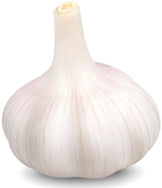Lyme Disease

In Western medicine, Lyme disease is characterized as an infectious condition caused by the spirochete bacteria Borrelia burgdorferi, most frequently transmitted through tick bites (Steere et al., 2004, Journal of the American Medical Association).
The disease manifests in three primary stages: Stage one, typically occurring within 30 days post-bite, features erythema migrans, flu-like symptoms, and low-grade fever (Wormser et al., 2006, Clinical Infectious Diseases). Stage two, emerging between weeks 3-12, involves symptoms like fatigue, fever, and neurological and cardiac complications (Halperin, 2015, Journal of Neurology). Stage three, potentially developing months to years post-infection, can involve aseptic meningitis, Bell's palsy, arthritis, and cognitive deficits (Strle et al., 2017, Journal of Clinical Microbiology). Traditional Chinese Medicine (TCM) categorizes similar symptoms under Gu Syndrome, which represents conditions resulting from invisible pathogens or of indeterminate origins and often manifests as complex chronic infections and multi-systemic issues (He et al., 2011, Chinese Medicine).

Categorieswhen you select any items page will be refresh and focus will be move out of the page
Health Concerns
Black Seed Oil - Organic
Black Seed Oil (Nigella Sativa) Black seed oil, also known as black cumin seed oil, is cold-pressed from the seeds of the Nigel...
Current price$34.93
Garlic Powder - Organic
Organic Garlic Powder delivers the bold, savory flavor of fresh garlic in a convenient, finely ground form. With its rich aroma...
Current price$26.61
Red Reishi Mushroom Powder (Lingzhi) ...
Organic Red Reishi Mushroom Powder (Lingzhi) is made from Ganoderma lucidum, a mushroom known for its deep, earthy flavor and l...
Current price$46.58
Red Reishi Mushroom Extract Powder (L...
Organic Red Reishi Mushroom Extract Powder is made from Ganoderma lucidum, a mushroom traditionally valued for its distinctive ...
Current price$53.24
Recently Viewed Products
Feel Better. Look Better. Be Better.
Get on the list for actionable Health & Nutrition advice every week.







































